\documentclass[UTF8]{ctexart} %引入向入中文库
\bibliographystyle{plain} %设置参考文献引用格式
\usepackage{amsmath,esint} %bigtriangledown所需要使用到的数学公式宏
\usepackage{mathtools} %定界符需要的宏包支持
\usepackage{color} %调用颜色包
\author{北巷的猫}
\title{位场理论}
\begin{document}
\maketitle %生成标题
\pagebreak %在此处分页
\tableofcontents %生成目录
\pagebreak %在此处分页
\section{场的定义}
\subsection{场的定义}
{\heiti 数学上的定义:}
A field may be defined mathematically as the function of a set of variables in a given space。
给定空间内一系列变量的函数
a field is a distribution in space of any quantity: scalar, vector, time dependent, or independent of time \\
{\heiti 物理上的定义}
A field is a physical quantity, represented by a number or tensor, that has a value for each point in space and time!
场是一个用数字或张量表示的,在时间和空间上任意一点都有值的物理量。
\subsection{位场的定义}
设矢量场在区域D内的场量函数为:$\vec{A}(x,y,z)$,对于区域D内的任一闭合曲线L,都有$\oint_L A \cdot dl = 0$,则称矢量场$\vec{A}(x,y,z)$为位场。
根据stokes定理:
$$\oint A \cdot dl = \iint_s \nabla \times A \cdot dS $$
得到:$\oint A \cdot dl = 0$,即矢量场A的积分与路径无关,即存在未函数,使得:
$$ A = -\nabla\dot U $$
{\color{cyan}即无旋为位场。} %使用蓝色字体显示
\subsection{场的刻画}
\subsubsection{梯度}
$$\nabla\varphi = grad\varphi = \frac{\partial\varphi}{\partial x}\vec {i}+ \frac{\partial\varphi}{\partial y}\vec {j} + \frac{\partial\varphi}{\partial z}\vec {k}$$
\subsubsection{散度}
$$\nabla \cdot \vec{A} = div\vec{\varphi}=
\frac{\partial\varphi}{\partial A_x} + \frac{\partial\varphi}{\partial A_ y} + \frac{\partial\varphi}{\partial A_z}$$
\subsubsection{旋度}
\[\nabla \times \vec{A} = rat \vec{A} =\begin{bmatrix}
\vec{i} & \vec{j} & \vec{k} \\
\frac{\partial}{\partial x} & \frac{\partial}{\partial x} & \frac{\partial}{\partial x} \\
A_ x & A_ y & A_ z
\end{bmatrix} \]
\section{场的基本特征}
\subsection{源}
\subsection{位满足的方程}
\subsection{位的分类}
\subsection{磁偶极子产生的位}
\section{几个重要的场}
\subsection{引力场}
1.{\heiti万有引力定律} \\
$$ \overrightarrow{\mathbf{F_{12}}} = \mathbf{-f\frac{m_1m_2}{r_{12} ^3}}\overrightarrow{\mathbf{r_{12}}}$$
2.{\heiti引力场的涡旋特征}
$$ \oint\limits_L\overrightarrow{\mathbf{G}}\mathbf{\cdot d\overrightarrow {l}} = 0$$
根据斯托克斯公式
$$\oint\limits_L \overrightarrow{G}\cdot d\overrightarrow{l} = \iint\limits_S rot\overrightarrow{G}\cdot d\overrightarrow{s}$$
$$\nabla \times \overrightarrow{G}\cdot d\overrightarrow{s}$$
它说明引力场$\overrightarrow{G}$是处处无旋的。\\
因此,引入标位
$$ \mathbf{U=(x,y,z)=\int _{(x_0,y_0,z_0)}^{(x,y,z)}\overrightarrow{G}\cdot d\overrightarrow{l}} $$
\subsection{恒定电流场}
\section{位场变换}
\subsection{δ函数的定义}
狄拉克函数(Dirac Delta Function) \\
{\heiti 定义} %使用黑体
$$\delta(x) =
\begin{dcases}
+\infty,&x = 0 \\
0,&x \neq 0
\end{dcases}$$
{\heiti 性质} \\
$$\int_{+\infty}^{-\infty} \delta(x)\mathrm{d}x = 1$$
\subsection{格林公式}
1.格林第一公式\cite{GreenEquation} % \cite表示在这里引用参考文献
$$\oiint\limits_S V\frac{\partial U}{\partial n}\mathrm{d}s %limits使下标显示在正下方
= \iiint\limits_V \left(V\nabla^ 2 U+\nabla U \nabla U)
\right)\mathrm{d}\upsilon$$
2.格林第二公式
$$\oiint\limits_S \left(V \frac{\partial U}{\partial n} - U\frac{\partial V}{\partial n}\right)\mathrm{d}s
=\iiint\limits_V \left(V \nabla^2 U - U \nabla^2 V \right)\mathrm{d}\upsilon$$
\subsection{调和函数}
\subsection{泊松公式}
\subsection{延拓}
\subsection{基本位场变换公式}
\subsection{傅里叶变换}
\subsection{磁化极}
\bibliography{potential_field_theory} %在此处打印参考文献,参考文献库为 potential_field_theory.bib
\end{document}

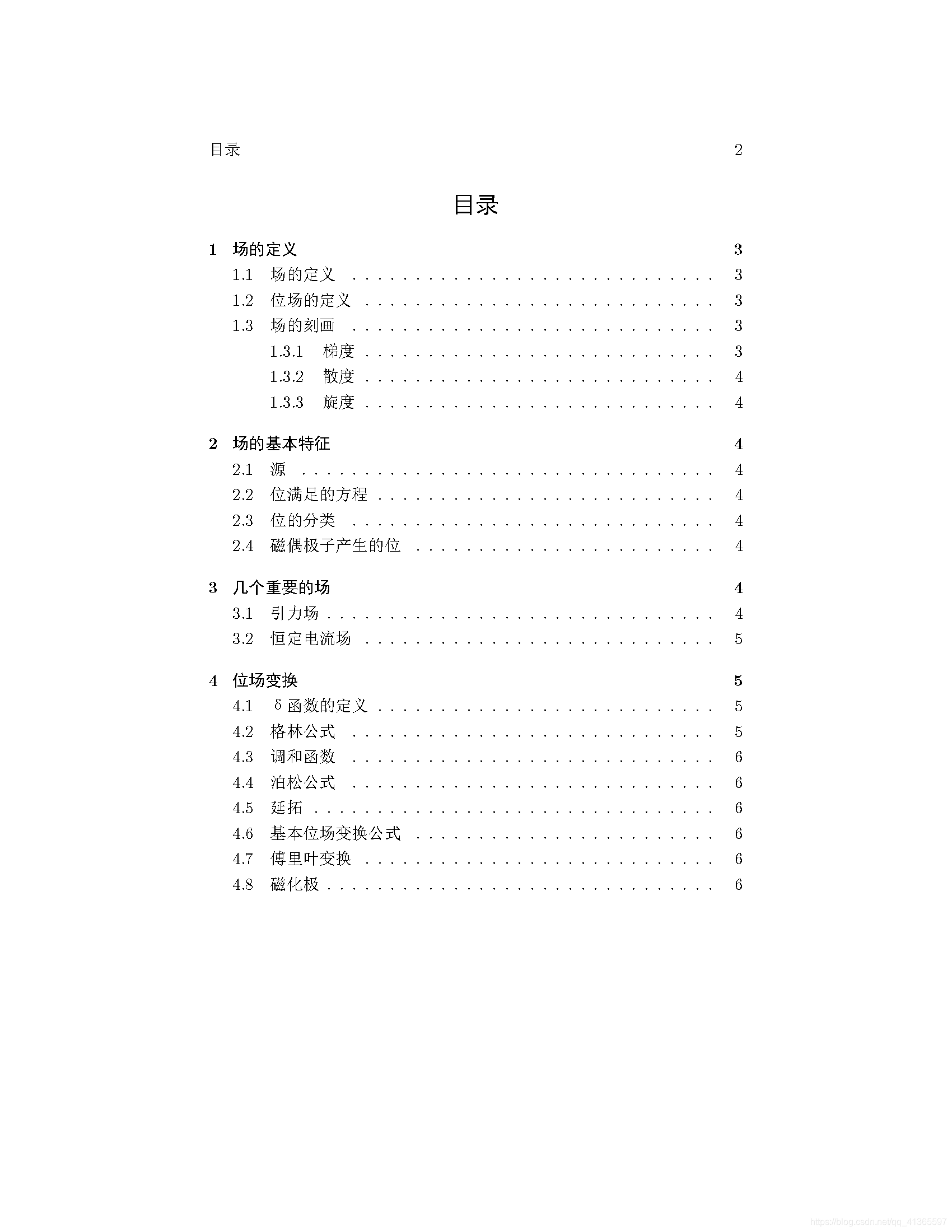

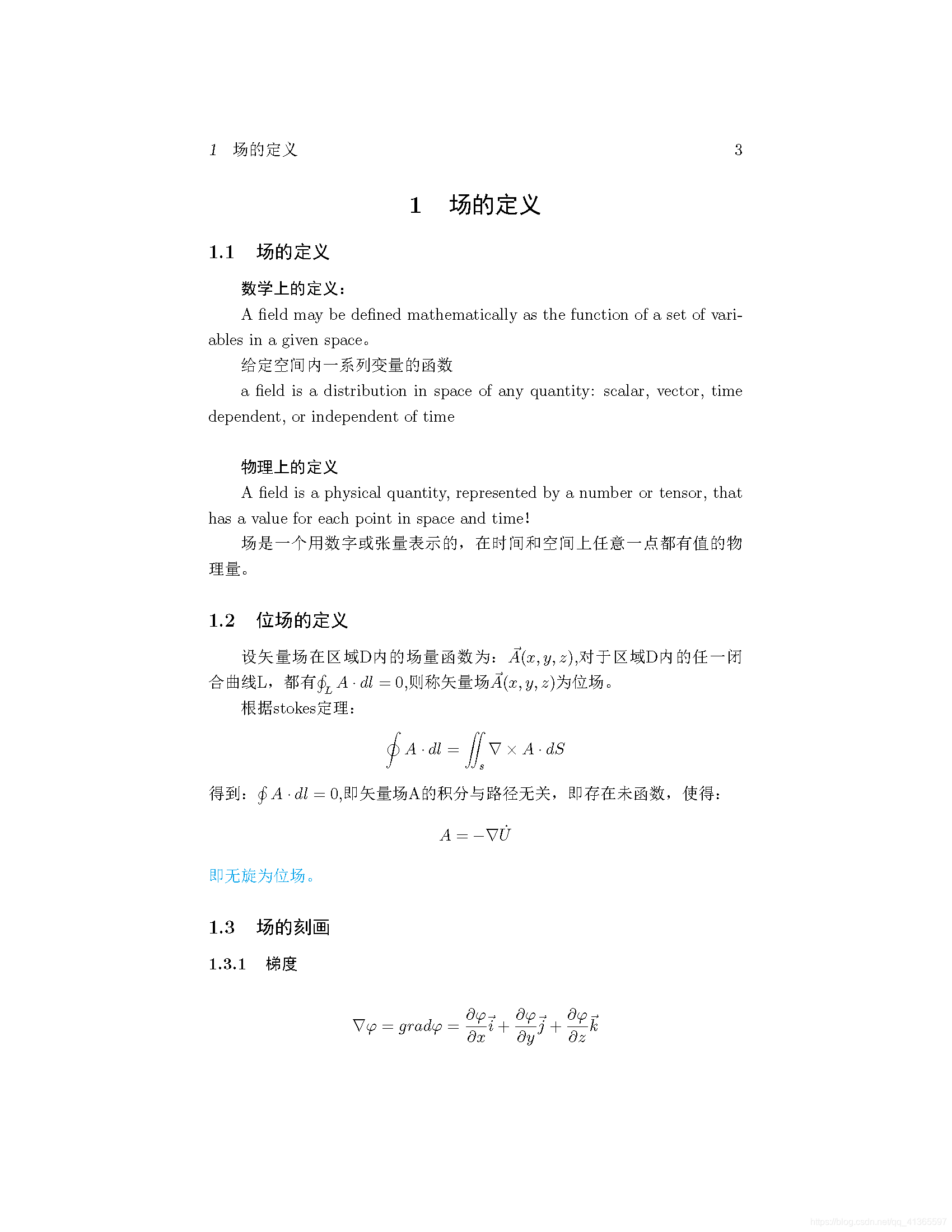
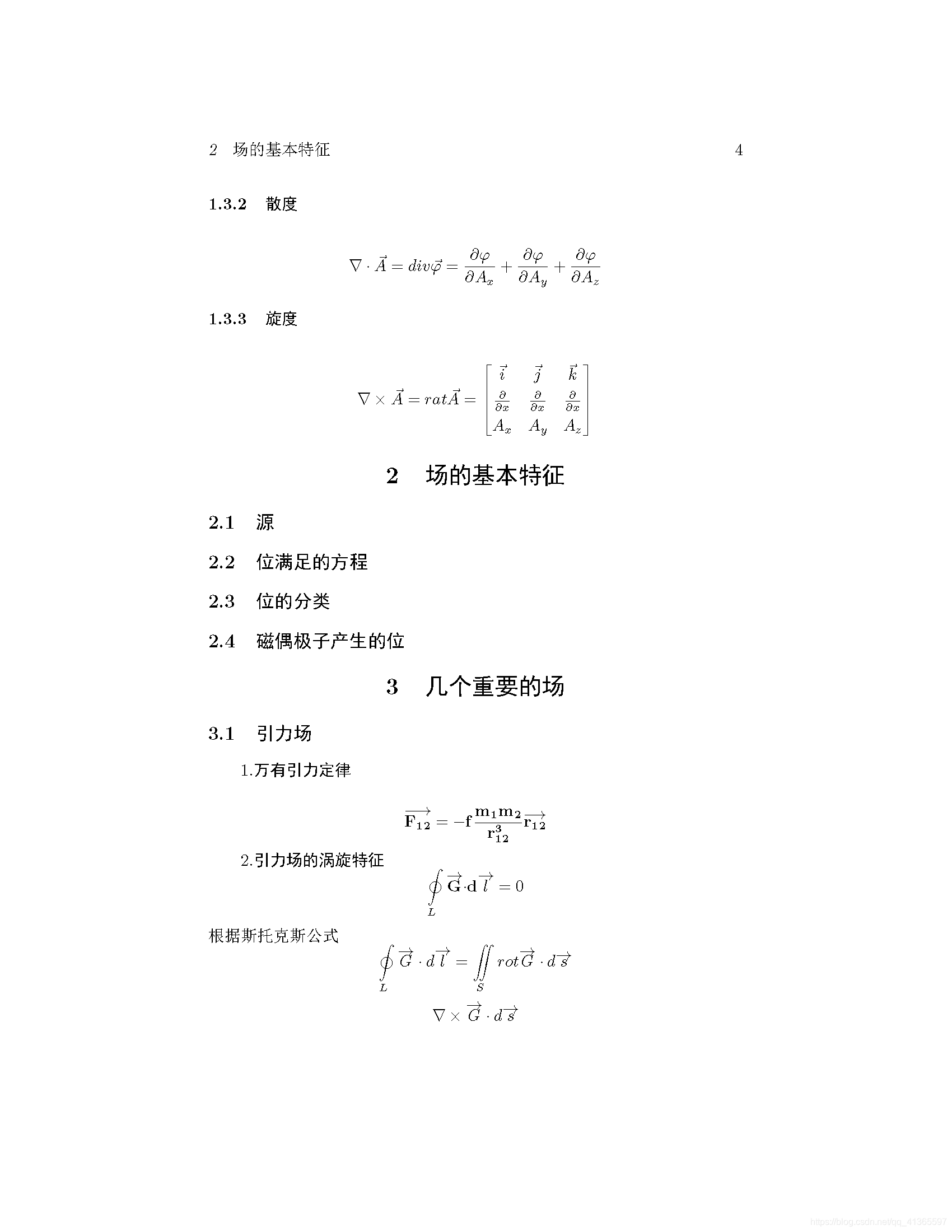
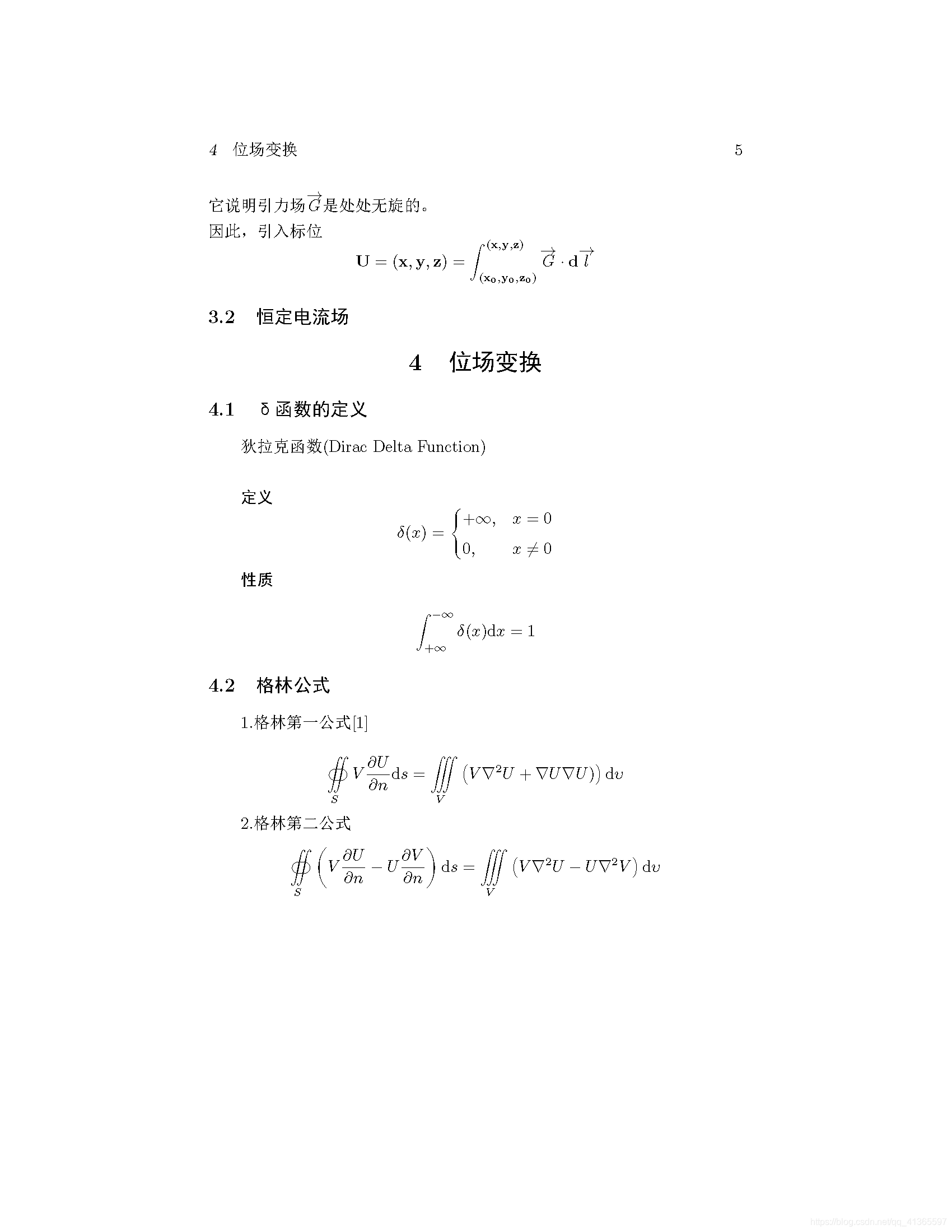
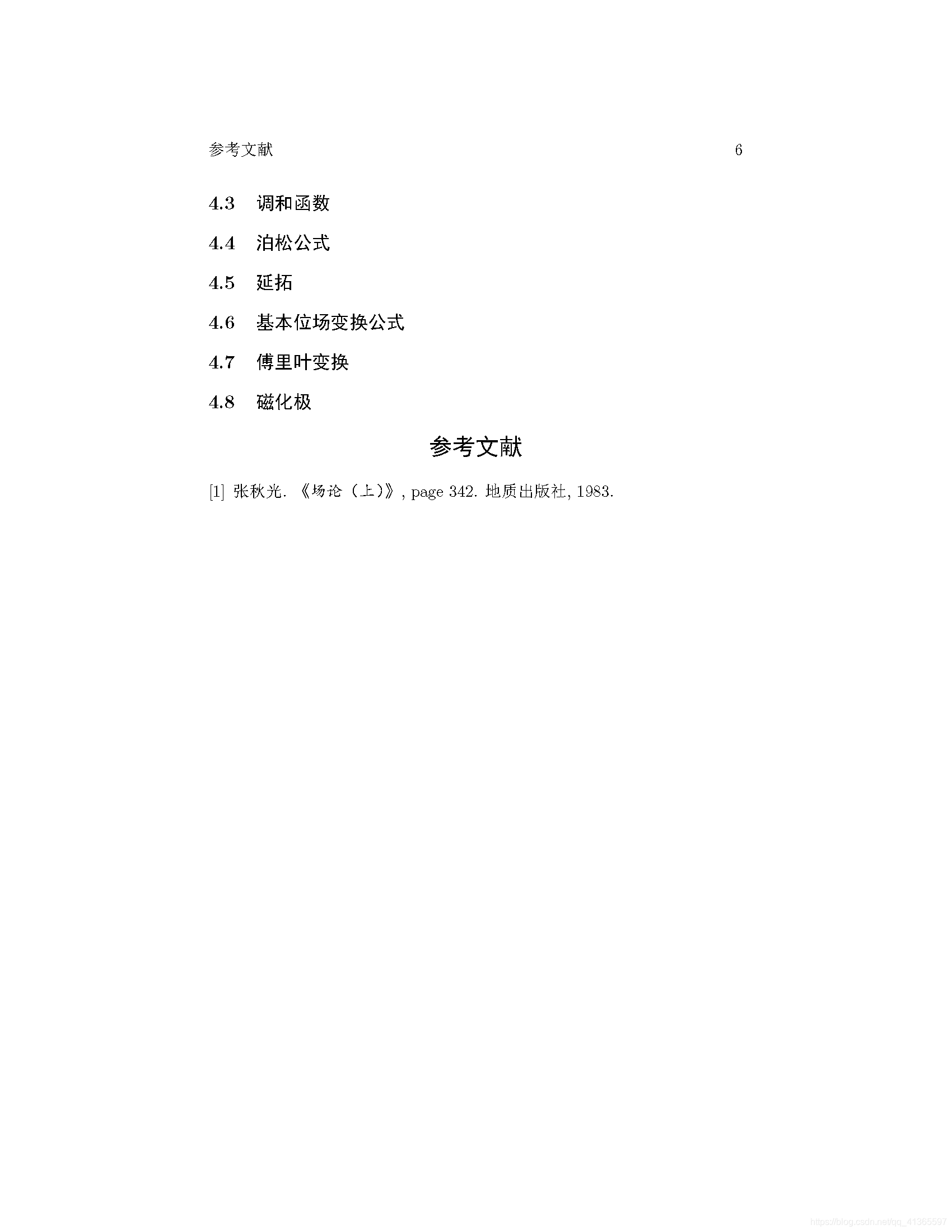




 本文深入探讨了位场理论的核心概念,包括场的数学与物理定义、位场的特性及几种重要场的解析,如引力场和恒定电流场。通过详细解释梯度、散度和旋度等关键概念,文章提供了理解位场变换的基础,涵盖了δ函数、格林公式、调和函数及泊松公式等内容。
本文深入探讨了位场理论的核心概念,包括场的数学与物理定义、位场的特性及几种重要场的解析,如引力场和恒定电流场。通过详细解释梯度、散度和旋度等关键概念,文章提供了理解位场变换的基础,涵盖了δ函数、格林公式、调和函数及泊松公式等内容。
















 3131
3131

 被折叠的 条评论
为什么被折叠?
被折叠的 条评论
为什么被折叠?








